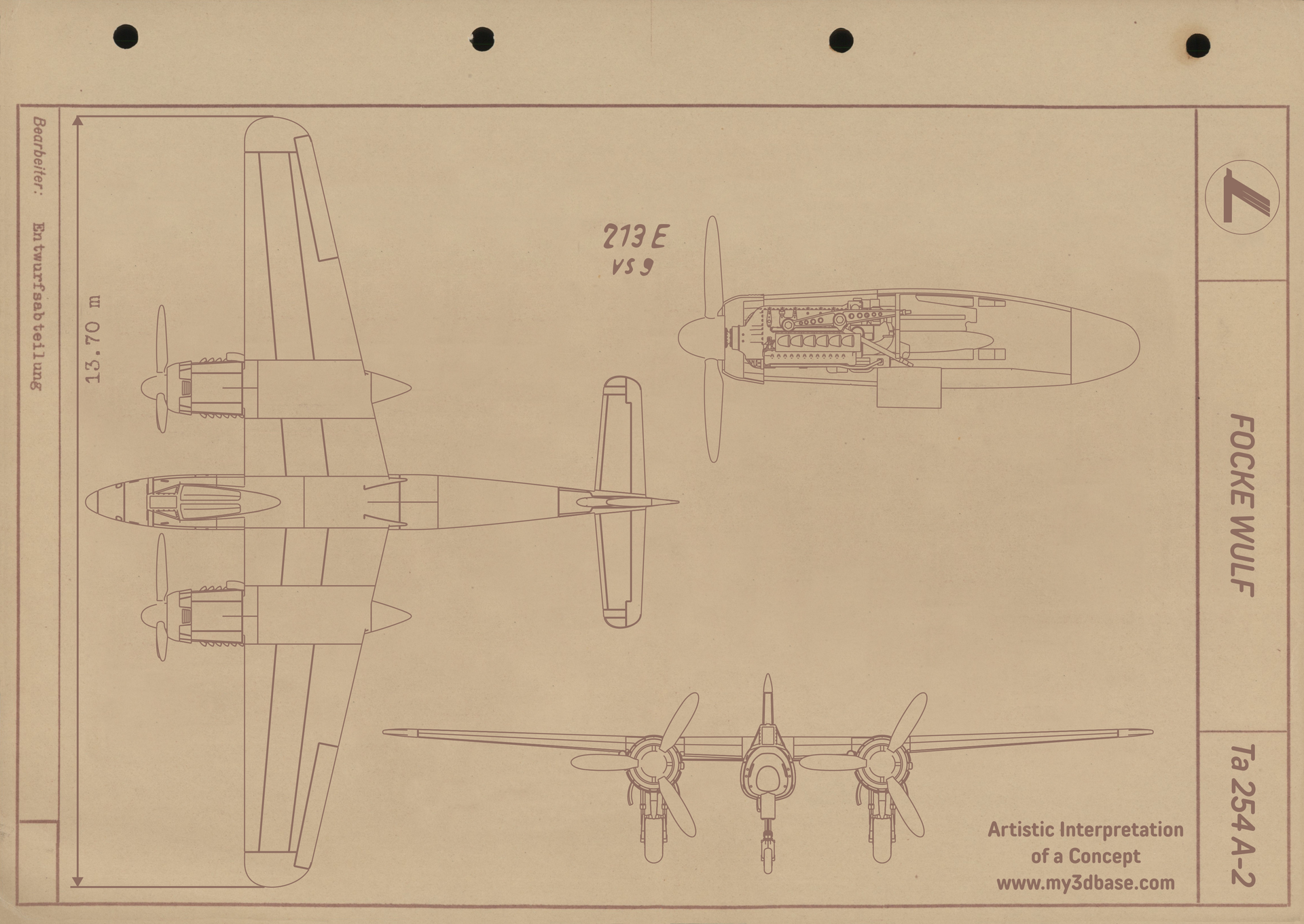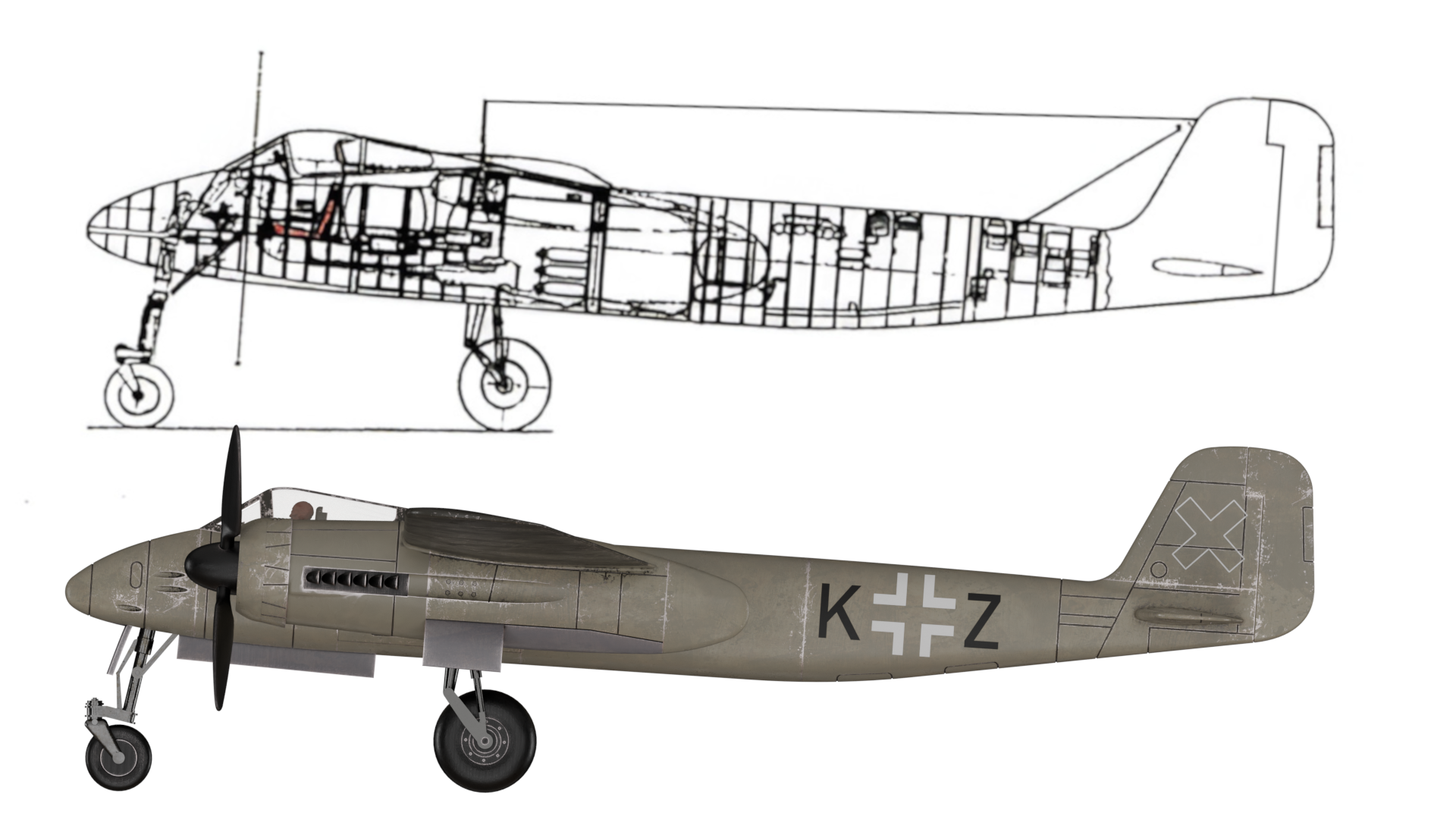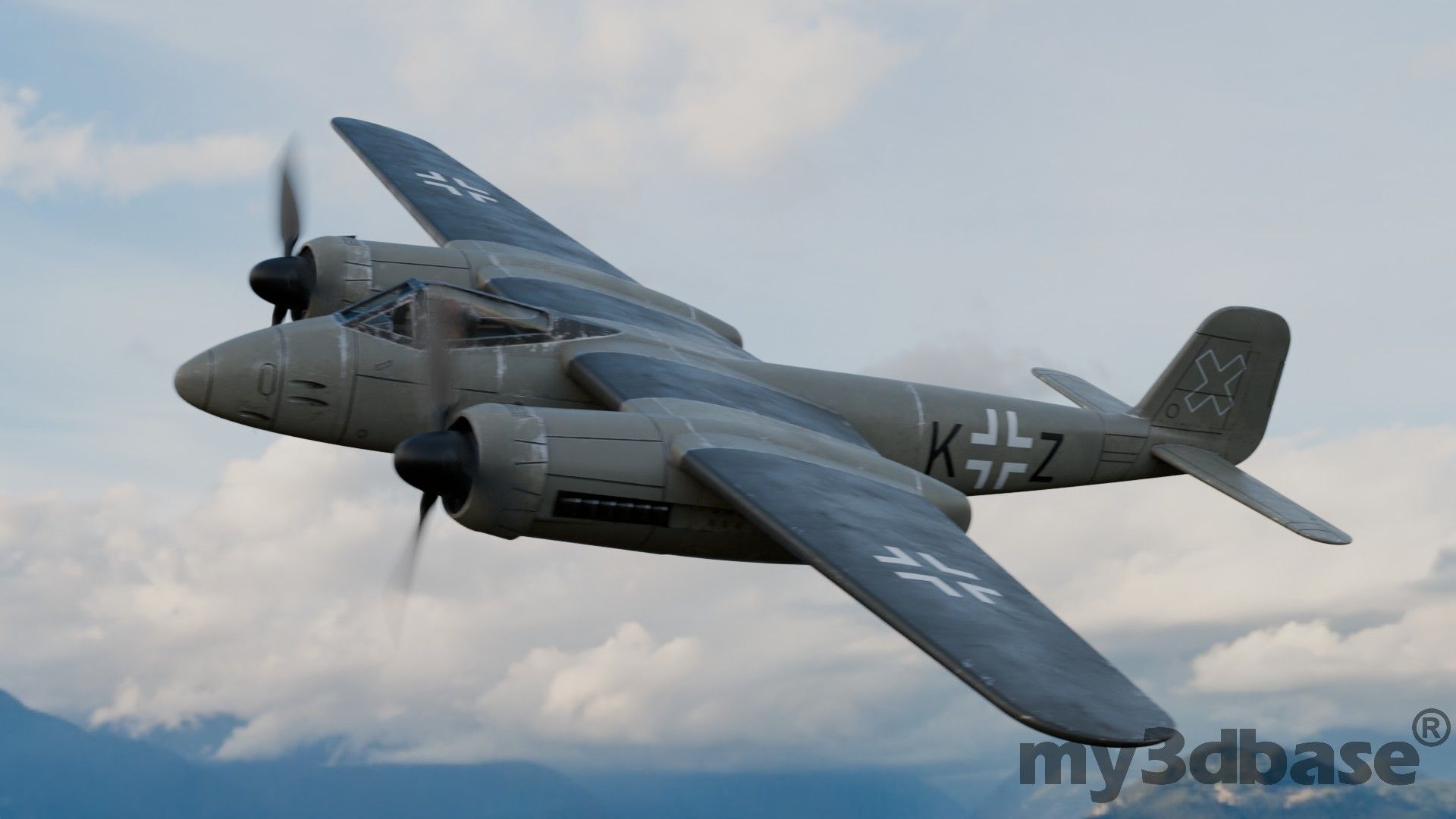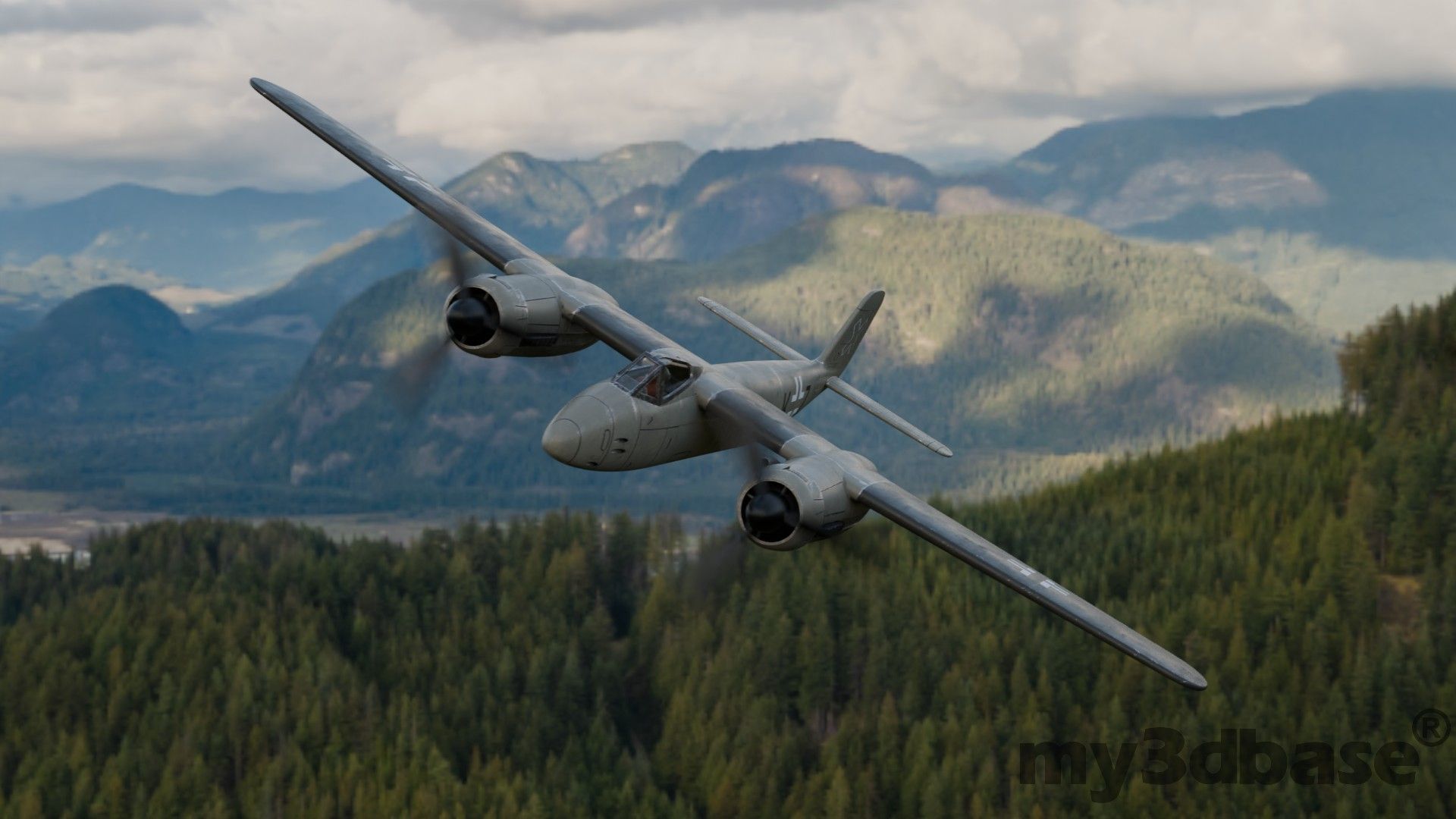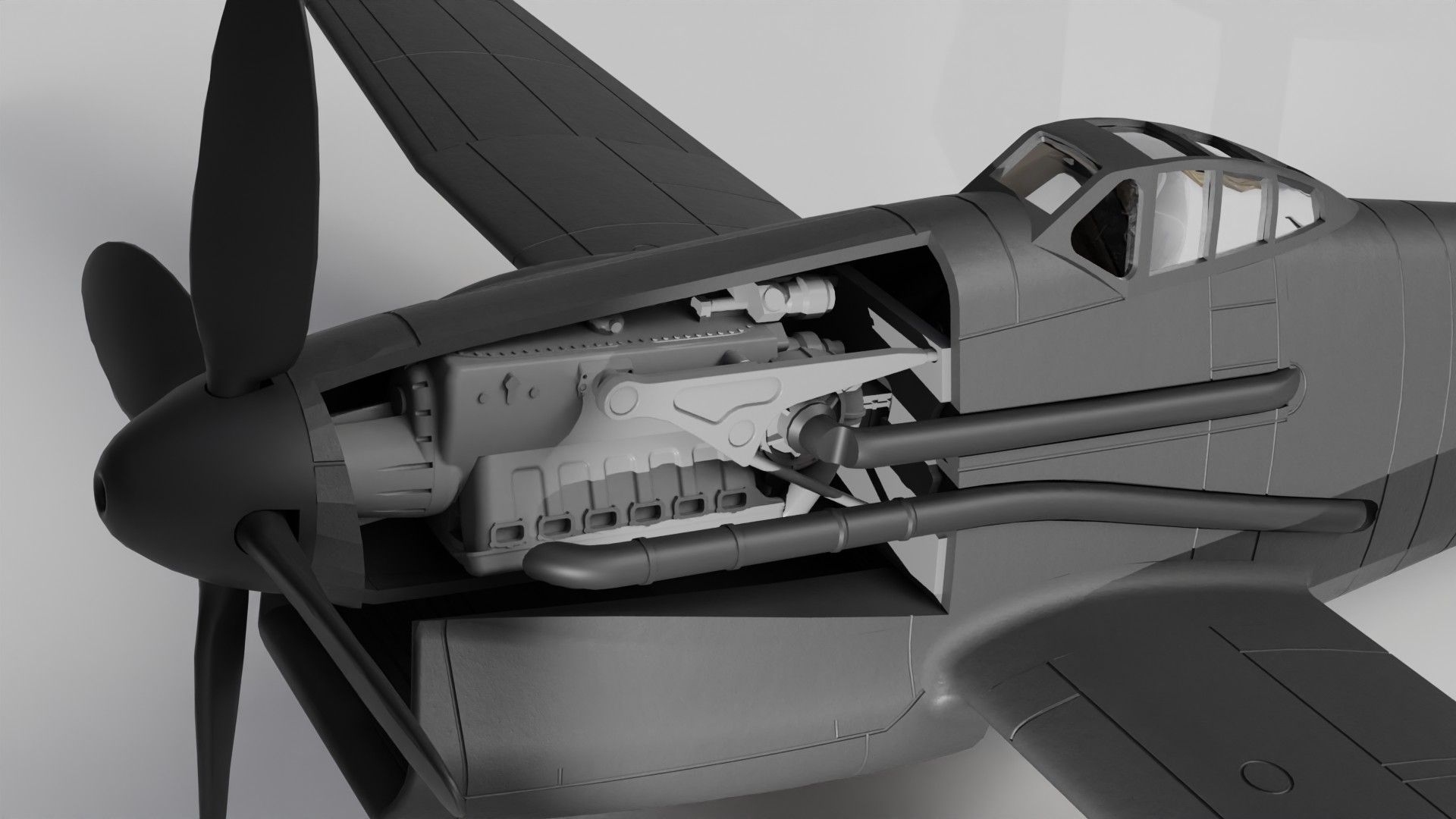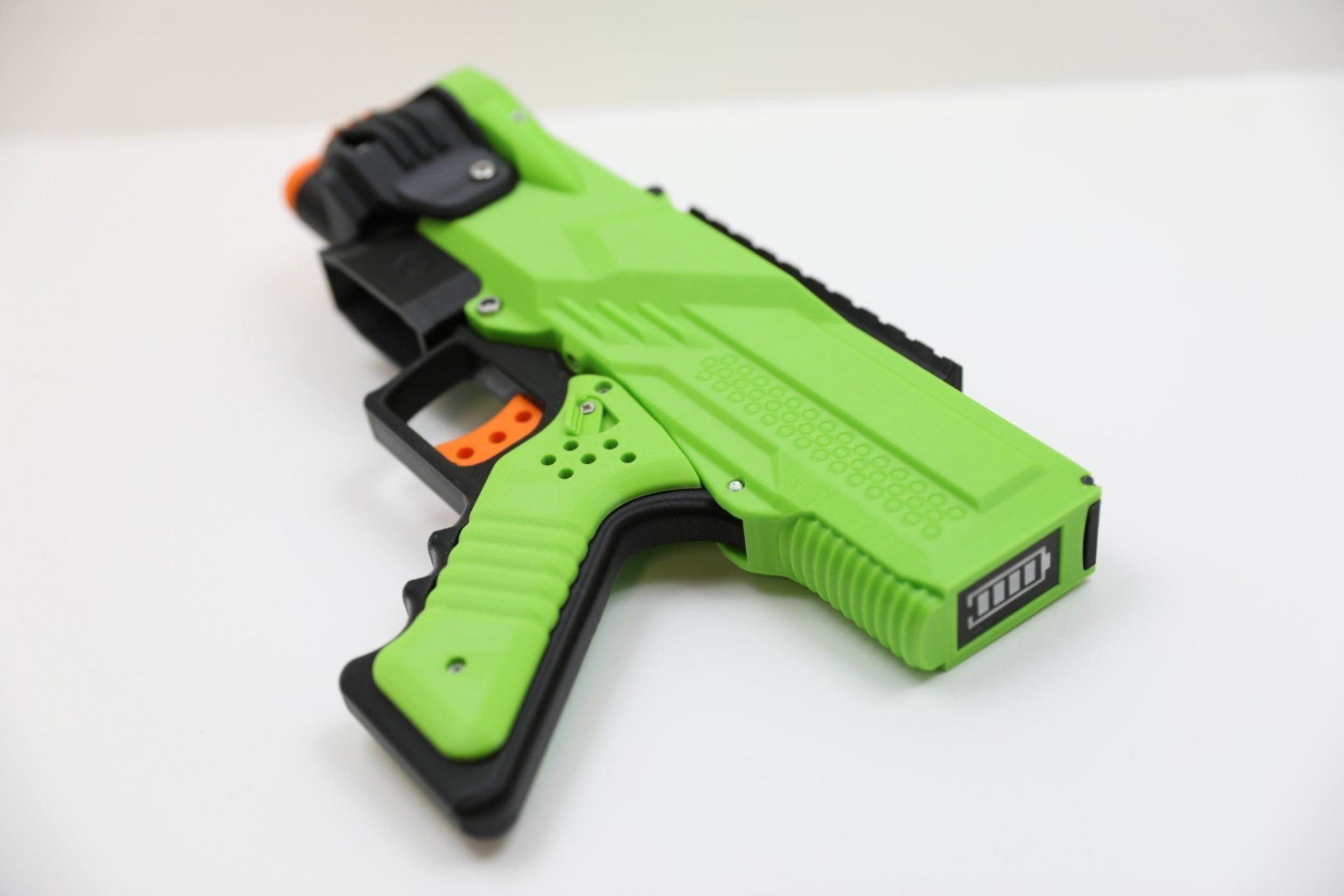Ta 254
The Unfinished Evolution of the "Mosquito"
The Focke-Wulf Ta 154, often known as the "Mosquito," was a promising German night fighter from World War II. However, even during the Ta 154's development, a further evolution emerged: the Ta 254. This aircraft was intended to replace the "Mosquito" and advance its concepts.
A Further Development for Diverse Roles
The Ta 254 was designed as a direct evolution of the Ta 154. While the Ta 154 was primarily intended as a night fighter, the Ta 254 was planned for various roles.
The projected variants included:
- Ta 254 A-series: These were primarily conceived as two-seat night fighters. Interestingly, some planned Ta 154 D variants were directly renamed into the Ta 254 A-series; for example, the Ta 154 D-1 became the Ta 254 A-1 and the Ta 154 D-2 became the Ta 254 A-3. The Ta 254 A-0 was also a two-seat night fighter.
- Ta 254 B-series: These variants were primarily intended as single-seat day fighters.
Planned Performance and Armament
The Ta 254 was to be equipped with more powerful engines than the early Ta 154 models.
- The Ta 254 A-0, A-1, A-2, and A-3 were equipped with two Junkers Jumo 213 E engines, each to be operated with a VS 9 propeller.
- The Ta 254 B-1 and B-2 were also to use Jumo 213 E engines, but without the DB 603 component, while the Ta 254 B-3 was planned with DB 603 L engines and an MW 50 boost system(performance enhancement through methanol-water injection).
In terms of dimensions, the Ta 254 models were similar or identical to the Ta 154:
- The Ta 254 A-0 had a wingspan of 16.00 meters and a length of 13.70 meters.
- The Ta 254 A-1 had the same dimensions.
The armament was to vary depending on the variant:
- The Ta 254 A-1 was to be equipped with two 20-mm MG 151/20 cannons(with 200 rounds each) and two 30-mm MK 108 cannons(with 100 rounds each).
- The Ta 254 A-2 was planned for four 30-mm MK 108 cannons and two 30-mm MK 103 cannons.
- The Ta 254 A-3 was even to carry six 30-mm MK 108 cannons.
The Premature End of a Promising Project
Despite the promising plans and detailed designs, the Fw Ta 254's existence was "brief." Production was ultimately discontinued. Further developments beyond the Ta 254 were deemed difficult due to limited resources. This marked the end of an aircraft project that had the potential to further solidify the "Mosquito's" role in the final months of the war. The Ta 254 thus remains an interesting chapter in the history of German aviation, demonstrating the pursuit of continuous innovation even under difficult circumstances.
Detailed Timeline of the Focke-Wulf Ta 154 "Moskito"
Early 1940s:
- Context: The increasing effectiveness of the British de Havilland DH 98 Mosquito, particularly against German bombers, prompts the RLM (Reichs Luftfahrt Ministerium) to consider a new wooden night fighter.
1942:
- October 14, 1942: Focke-Wulf begins design work on the Ta 211, an aircraft that would later become the Ta 154. Early designs, such as Entwurf 1 (fast bomber) and Entwurf 2 (night fighter), are conceptualized with Jumo 211F engines.
- October 1942: Generalfeldmarschall Milch (General Inspector of the Air Force) and Generalluftzeugmeister der Luftwaffe (Director General of Luftwaffe Equipment) agree to proceed with the wooden night fighter project. Kurt Tank, as Technical Director at Focke-Wulf, is assigned the development.
- October 1942: The RLM assigns the "Moskito" designation to the new Focke-Wulf project, acknowledging its similarity to the British Mosquito.
1943:
- Spring 1943: Despite initial doubts about the feasibility of wood construction for a large-scale fighter, Professor Tank begins intensive work on the Ta 154 project.
- July 1943: The first prototype, Ta 154 V1 (Werk-Nr. 100001, TE+FE), makes its maiden flight at Langenhagen with Hans Sander as the test pilot. Initial flight tests show good handling and performance, though some issues with the landing gear and tail-wheel tricycle setup are noted. The aircraft initially has no armament or radar.
- July 1943: Further flight tests of the Ta 154 V1 are conducted by Kurt Tank and Oberleutnant Friedhelm Schnier in Langenhagen.
- August 1943: A further prototype, Ta 154 V2 (Werk-Nr. 100002, TE+FF), is flown. This aircraft also initially lacks armament and radar. It is equipped with FuG 212 radar and Matratze antennas later in 1944.
- September 1943: The Ta 154 V3 (Werk-Nr. 100003, TE+FG) makes its initial flight. It is equipped with extended vertical stabilizers and FuG 212 radar.
- October 2, 1943: Major Helmut Lent, a night fighter ace, observes the V1 and comments on the high wing loading, which makes the aircraft sluggish.
- October 8, 1943: Major Helmut Lent (acting as Dipl.-Ingenieur Kurt Menthorn) sends a memorandum expressing concerns about the Ta 154's performance during an exhaustive test program at Chernyakhovsk (USSR).
- October 19, 1943: Professor Tank submits a request to the RLM for the Ta 154 program to be re-designated from "Schnellbomber" (fast bomber) to "Nachtjäger" (night fighter) and "Zerstörer" (destroyer). This re-designation, officially approved later, necessitates changes to armament and equipment.
- November 1943: The V3 prototype performs its first flight with radar in Rechlin, specifically with the FuG 220 "Lichtenstein" SN-2 radar.
- December 1943: Decision made to designate the V3 for "Erprobungsstelle Rechlin" as an experimental aircraft for a unit test based at Rechlin.
1944:
- January 19, 1944: A crash of a Ta 154 prototype (likely a V4) occurs during a landing approach due to landing gear hydraulic system failure, leading to a damaged wing and a fire. This particular aircraft is the Ta 154 V4 (Werk-Nr. 100004, TE+FH), which had its first flight on January 19, 1944. It was intended for armament tests in Tarnewitz.
- February 1944: The first prototype (V1) is re-engined with Jumo 211Ns.
- February 24, 1944: Hauptmann Ludwig Meister, a night fighter, and Major Wilhelm Herget fly the V3. They comment positively on the speed and maneuverability but request 30 mm MK 108 cannon installation in the fuselage.
- February 28, 1944: The nose wheel of the V3 fails during a snow-covered runway landing at Sorau (Poland).
- March 1944: The first 22 pre-production Ta 154 A-0 two-seat night fighters are completed at Langenhagen. These are powered by Jumo 211F engines with VS 11 propellers and are designed for service evaluation. Production is also planned to begin in Erfurt and Posen.
- March 25, 1944: The Ta 154 V7 (Werk-Nr. 100007, TE+FK) is completed. It does not initially feature radar.
- April 7, 1944: The Ta 154 V7 (TE+FK) crashes due to a propeller failure, resulting in a wing collapse and the pilot's death. This crash highlights significant issues with the glued wooden construction.
- April 1944: The Ta 154 A-1 and A-2 series are in production.
- April 1944: Third prototype of the Ta 154 V4 (Werk-Nr. 100004, TE+FH) is flown by Feldwebel Werner Bartsch, a Luftwaffe pilot. He receives serious injury after the flight.
- April 1944 (Spring): The first production Ta 154 A-1/R1 (Werk-Nr. 320008, KU+SU) is acquired by Stab III./NJG 3 at Lechfeld.
- May 5, 1944: The Ta 154 V9 crashes due to engine failure and uncontrolled landing at Geismar. The pilot, Luipold Otto, and flight engineer Werner Bartsch survive with injuries. The crew reported eight months later in a hospital.
- May 6, 1944: The Ta 154 V9 (Werk-Nr. 100009, TE+FM) is destroyed due to a crash caused by engine failure.
- May 1944: Several Ta 154 A-0 and A-2 aircraft are used for testing various concepts, including "Mistel" applications with the Fw 190.
- May 29, 1944: Five prototypes are attacked by US Army Air Force bombers.
- June 1944: Testing of the Ta 154 A-0/U1 "Pulkerstörer" (crowd destroyer) begins.
- June 1, 1944: The Ta 154 A-1 (KU+SQ, Werk-Nr. 320004) crashes at Erfurt due to glue failure, killing the crew. This incident reveals fundamental problems with the adhesive used in the wood construction.
- June 2, 1944: Werner Bartsch taxis the V14 to the runway at Berlin-Staaken, but the aircraft is impounded shortly after by General Galland for an investigation into its failures.
- July 26, 1944: The dramatic glue failure of the Ta 154 A-1 leads to a comparison demonstration of the Ta 154, the Messerschmitt Bf 109 H, and the Focke-Wulf Fw 190 A. The Bf 109 H, despite being a modified fighter, performs surprisingly well.
- August 1944: The Ta 154 program is officially halted on August 14, 1944, due to the critical issues with the adhesives used in its wooden construction.
- September-October 1944: Despite the program being officially halted, some production of the Ta 154 continues for testing and evaluation purposes.
- Late 1944: The RLM orders 250 Ta 154 aircraft for night fighter duties, demonstrating continued interest despite the production issues.
Sources
- Monogram Close-Up 22 Moskito
- Author: Jan J. Fresinger, Publisher: Monogram Aircraft Publications, Year: 1983, ISBN: 0-914144-22-7
- The book was published by Monogram Aircraft Publications. Additional acknowledgments go to Dipl. Ing. Hans Sander, Jan J. Fresinger, Hans J. Mueller, Hans J. Muzzy, Heinz J. Nowarra, Alfred Price, Hans Redemann, Rudolf Schoenert, and J. Richard Smith.
- Luftfahrt History Heft 19: Focke Wulf Fw Ta 154 und Fw 254 „Moskito“ – Das deutsche „hölzerne Wunder“, das nicht stattfinden konnte
- Editor: H. Immel, Publisher: LAUTEC Software und Medien GmbH
- This source contains detailed information on the development, prototypes, and testing of the Focke-Wulf Ta 154 and Fw 254, including issues related to the wooden construction type. The exact year of publication is not explicitly stated.
- Ta 154-254 - Google Sheets (Datentabelle)
- Compilation of data from various sources (Janusz Ledwoch, Monogram, Luftfahrt History, etc.)
- An overview of the wingspans and lengths of various variants of the Ta 154 and Ta 254, with references to the respective information sources. No explicit author or year is given.
- Ta 254 (Einzelnes Blatt)
- No author or year provided
- A very brief excerpt that only states the name of the aircraft type.
- Focke-Wulf Ta 154 „Moskito“ (Wydawnictwo Militaria, 2000)
- Author: Janusz Ledwoch, Publisher: Wydawnictwo Militaria, Year: 2000, ISBN: 83-7219-075-5
- This book covers the Focke-Wulf Ta 154 "Mosquito" and contains technical details, photos, and drawings of the aircraft.
- Focke-Wulf Ta 154 „Moskito“ (Wydawnictwo Militaria, 2008, Tank Power)
- Author: Janusz Ledwoch, Publisher: Wydawnictwo Militaria, Year: 2008,
